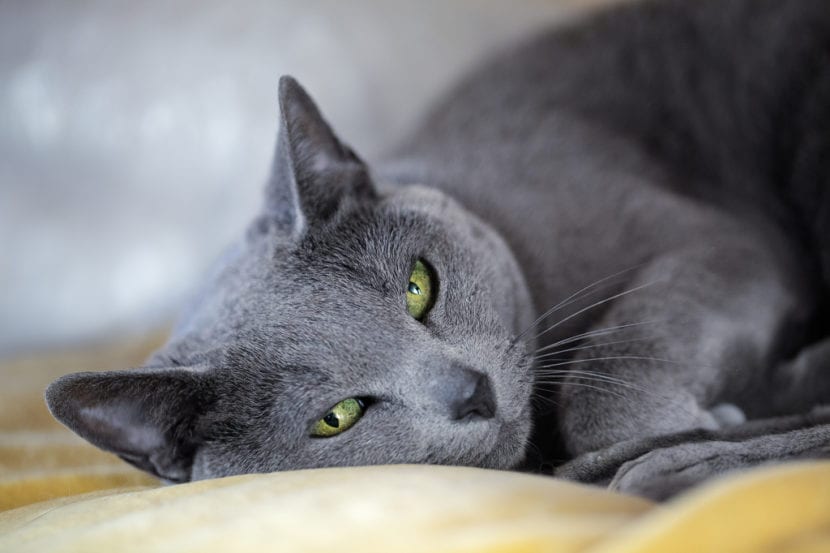
El russian blue cat it is, together with the Persian, a very noble race. And I'm not just talking about his calm and sincere character, but also his walk and slim body. The look that this furry man has is enigmatic, but at the same time, capable of calming those who need it.
Sociable and affectionate, the Russian blue cat loves to be caressed and, above all, to be taught things. Do you want to be his teacher?
Origin and history of the Russian blue cat
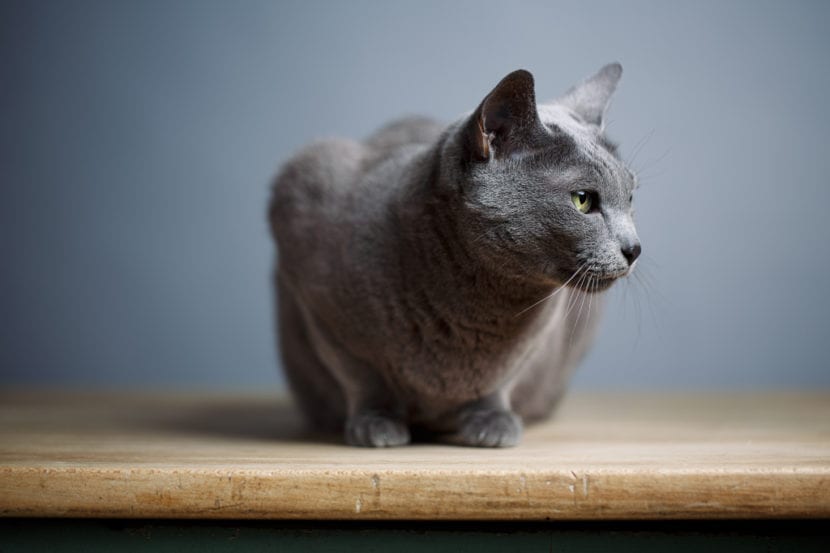
Although it is still not known exactly where it originates from, in the XNUMXth century, in Arkhangelsk (Russia) a few copies were bought and taken to England. From then on, more and more people became interested in them, and in 1880, they were exhibited for the first time.
However, in the 40s the breed was in danger of extinction as a result of World War II. To avoid what would undoubtedly have been a disaster, they interbred with Siamese cats. A few years later, in 1970, it was possible to work again to recover the pure Russian Blue, and in 1984 they could be officially recognized as a race.
Physical characteristics of the Russian blue cat
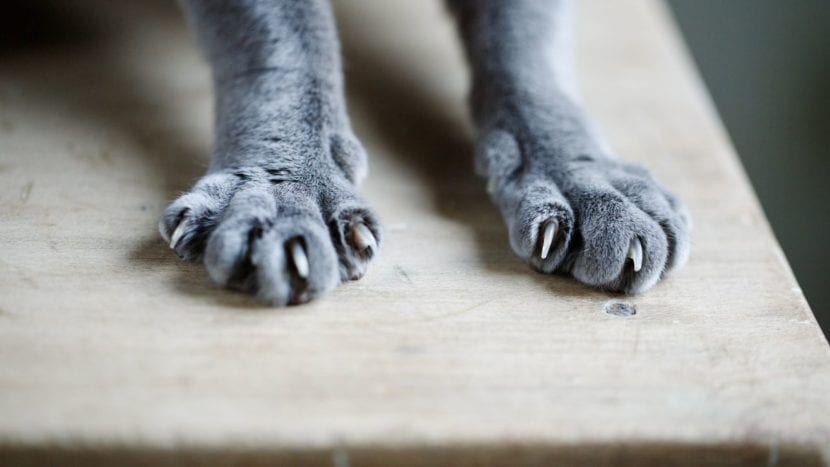
The Russian Blue cat is a medium to large size cat, weighing in at 3,5kg for females, and 7kg for males. The head is small, with a flat skull, and almond-green eyes, widely separated but not reaching the ends.
It has an elongated, robust body, with long legs, and covered in short, dense, blue-gray fur. Some may also have silver reflections, which is what is called silver tipping, but it is more accepted that the cat has a uniform blue.
How long does a Russian blue cat live?
The life expectancy of the Russian blue cat is 15 to 20 years, so it is equal to that of other races such as the common European. This is certainly good news, since for almost two decades you will be able to enjoy the beauty and sweetness of this animal.
Russian blue cat character
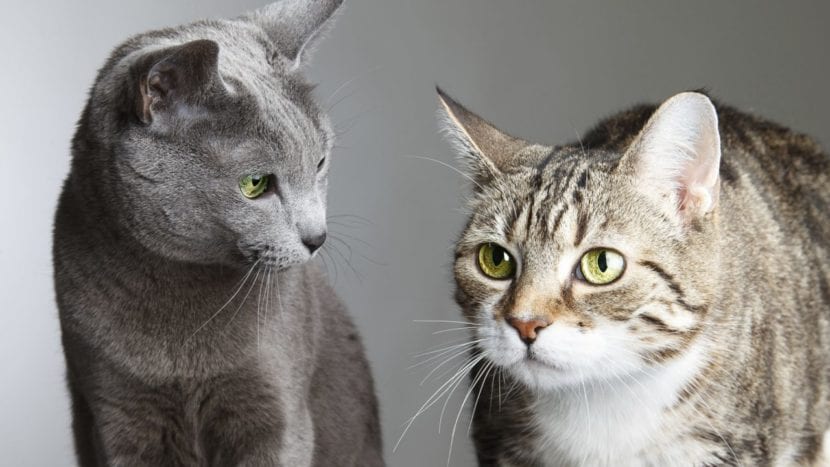
The Russian blue cat is very calm, but also distrustful with those people and animals that you do not know. You can get along well with them as long as they treat you gently, without rush or tension; otherwise, hissing, grunting, and so on will be very common.
For these reasons, this is a cat that will live best in families - whether or not they have children - who are quiet, who like to spend time with their four-legged friend (for example, while watching television or reading a book), but without overwhelm you. And if you plan to make the family grow, with some socialization guidelines you can get your cat to befriend the new member very soon.
Russian blue cat care
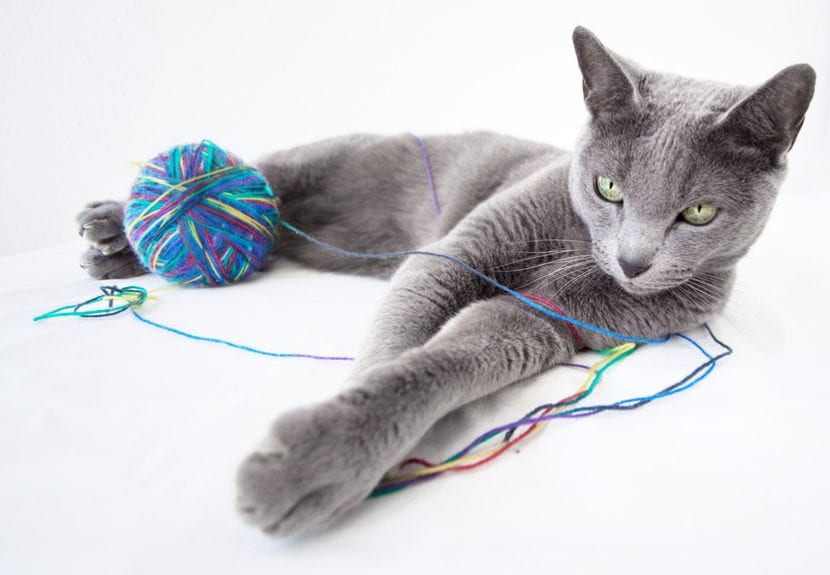
The Russian blue cat needs fresh and clean water, a quality diet and daily brushing. But in addition to these three fundamental cares, it is necessary to take him to the vet, as a puppy to get all the vaccinations, and once an adult to check his health.
Another important issue that we cannot forget is that of game. Despite being a calm cat, do not let it get bored. A bored animal is an animal that will not take long to do things it should not, such as scratching furniture or biting.
In pet stores you will find countless toys, such as laser pointers, balls, stuffed animals, ropes, interactive games ... Buy the ones you like the most and spend several short sessions a day having fun with your feline. You can even teach him commands, such as sitting or kicking.
Russian blue cat health
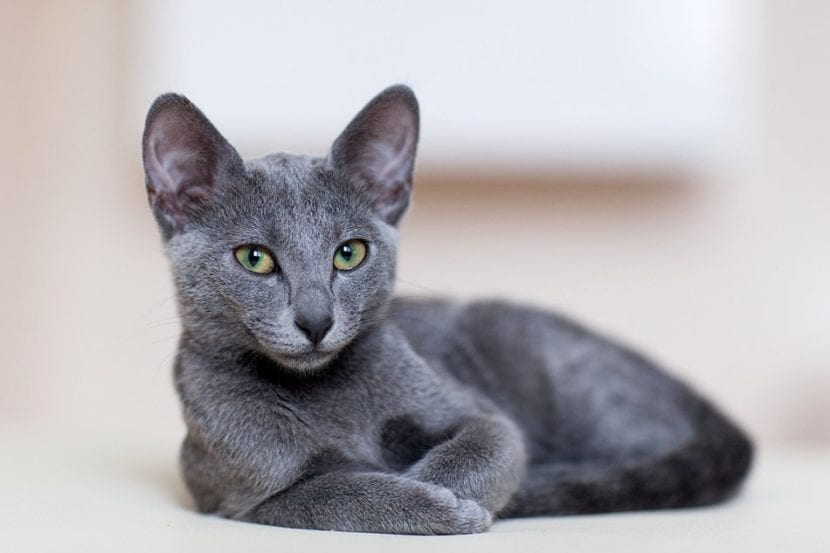
The Russian blue cat can boast of being one of the most popular breeds that are in very good health. This is due, in part, to the fact that humans have hardly genetically modified it. But beware, this does not mean that you cannot fall ill, far from it. It is a living being, and like everyone else it can become ill, or have an accident.
So From the first moment you notice or see that he is not well, you should take him to the vet. The most common diseases in felines are colds, otitis, conjunctivitis, and gastrointestinal problems. If you also receive the necessary vaccines, you can be highly protected against viruses that cause other more serious diseases, such as feline immunodeficiency or leukemia.
Does the Russian blue cat cause allergies?
Cat allergy is a very serious problem for those who adore these animals. But you can rest assured, since the Russian blue has a coat composed of two layers very close together and, in addition, dense, so the amount of hair she loses is considerably less than that lost by other breeds.
But if this seems little to you, you have to know that produces less glyprotein Fel D1, which is what triggers allergy symptoms. This makes it considered a hypoallergenic cat.
How much does a Russian blue cat cost?
Are you going to acquire a Russian blue cat and want to know how much it can cost you? If so, you have to know that if you are going to buy it in a hatchery the cost is about $700. If, on the other hand, you prefer to get it in a pet store, that price will be lower, around 500 euros.
Russian blue cat photos
The Russian blue cat is a charming animal, so we could not end the article without first giving you a photo gallery of this furry one. We hope you like them:








I adopted a cat identical to the one in the second photograph. Very active and funny, he recently presented parasitic problems due to his ex-street condition. Before I did not like cats, but with my Leoncio I feel very happy. I will learn a lot about them on the site.
I have a beautiful kitten I did not know what breed it was until yesterday that a person passed by and told me that it was Russian blue, its name is ninel and now I understand why when we went out with my wife she was crying the night before we took her out and happy I love her very much are beautiful animals all the kittens but especially my ninel
GIFT 2 RUSSIAN BLUE CATS
They have a very good character and are very affectionate. They are male and female. They are vaccinated, dewormed, sterilized and have a chip.
They are very well educated. They have always lived with me in a family home since they were born 4 years ago. So they are very awake young adults who should not be taught to do "little things" in their sandbox. They have never bit or scratched anyone because they have only experienced sweetness around them.
They really enjoy watching, following you, and purring next to your legs for you to caress them.
I gift them because two years ago I had an allergy. Although I have tried to overcome it, it has gone to more. And I can no longer give them the attention and affection they deserve.
I am looking for a home for both of us. They are brothers, they have always been together and this is how they want to be. They get along wonderfully. And two cats are the perfect combination to keep each other company when you're not home and to get double the pampering when you get home.
Serious and responsible people who want to give and receive a lot of love.
The kittens are ready to deliver in Barcelona.
The photos of those supposed Russian blue cats with orange eyes are not of that breed, they are chartreux cats, which is a different breed and their eyes are orange.
And if you adopt it, the cost is 0 in addition to giving it a second chance...